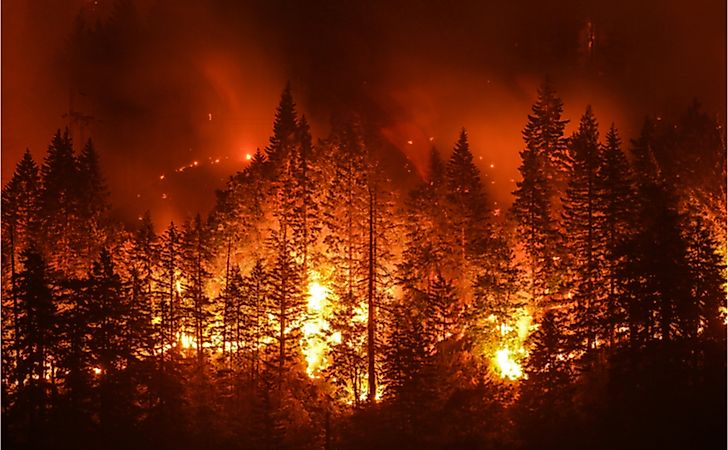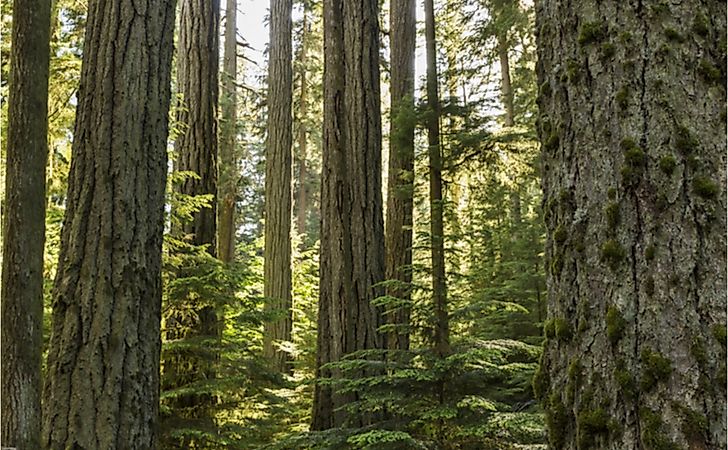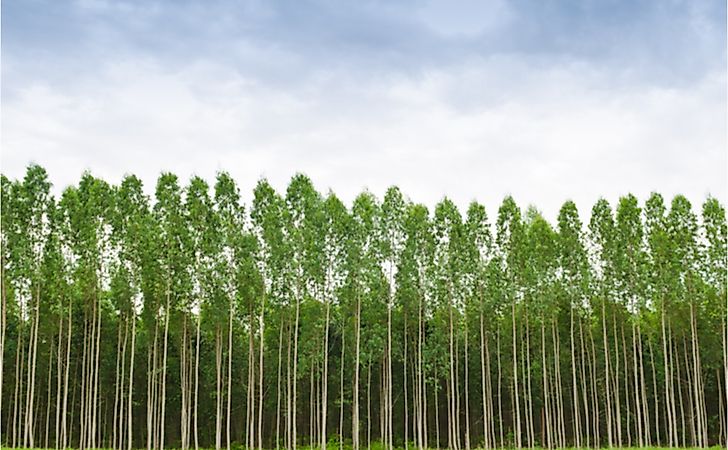What Are The Adaptations Of Pyrophytes Or Fire-Resistant Plants?

Wildfires or bushfires can be highly lethal to both flora and fauna. The idiom “spread like wildfire” reveals the rapidness with which such fires engulf vast tracts of land. However, not all places in the world experience such fires, some are more prone to them than others. While humans and other animals still stand a chance to escape as they can move physically, plants have nowhere to go. Thus, nature has equipped them with special mechanisms to survive such fires. Plants growing in areas with low and high fire regimes often have adaptations to help them resist death due to fire. Such plants are called fire-resistant plants or pyrophytes.
Pyrophytes can be of two types, “active pyrophytes” and “passive pyrophytes.” The former can withstand fire and have volatile oils that encourage the incidence of fires as it is beneficial to them. The latter resist fires and can easily outcompete less-resistant plants after the fire dies down. Plants that need fire to complete their life-cycle are called pyrophiles.
6. Thermal Insulation -

Plants growing in areas susceptible to low-severity and surface fire regimes often have thick, fire-retardant barks to protect them against fires. The bark that is composed of dead tissue protects the inner living tissues of the stem from damage by fire. The living tissue is responsible for the transport of water and nutrients from the soil to the upper branches and leaves of the plant and is vital for the plant’s survival. Hence, a thickened bark increases the survival chance of the plant. However, having thick barks in crown or high-severity fire regimes is of no use to the plant as such an adaptation is unable to save it from the raging fires.
Examples of plants with thick fire-resistant barks are larches, giant sequoias, Douglas-fir (Pseudostuga menziesii) and Ponderosa pine (Pinus ponderosa)
Some plants also retain dense, dead leaves around their stems. These leaves insulate the stem from wildfires. Examples include South African aloes and Australian grass tree.
Some plants also have moist tissues that protect the plant from dehydration during a fire as well insulate it from heat. Examples include several Protea species.
5. Tall Crowns And Self Pruning -

Many species of trees found in fire-prone areas grow very tall. They have a crown where most of the branches and leaves are concentrated. The rest of the trunk usually has very few branches. When a fire breaks out, the leaves and other vital tissues have a greater chance of escaping as they are far above the reach of most flames. The absence of lower branches also prevents the rise of flames to the top due to the laddering effect. Some of these trees have also developed “self-pruning” adaptations whereby the dead branches that are potential sources of fuel are readily removed by the plant.
Examples include several pine species and Eucalyptus species. The ponderosa pine exhibits self-pruning adaptations.
4. Epicormic Buds -
Plants growing in surface or low-severity fire regimes often exhibit this adaptation. They possess epicormic buds which are dormant buds protected beneath the bark or even deeper. These buds can survive fires or droughts and turn active and grow afterward. They help the plant to recover their canopies rapidly.
Some eucalyptus species have epicormic buds.
3. Lignotuber -
In some pyrophytes, the root crown is swollen and woody and stores buds and starch. The specialized structure is called a lignotuber. It is quite resistant to fires. Once the fire dies down, the buds contained within the lignotuber can develop into a new plant. The stored starch provides nutrition to the growing plant to support it during the absence of photosynthesis.
Examples of plants with lignotubers including several Eucalyptus species like Eucalyptus marginata or Jarrah, and many oak species like Quercus suber or cork oak.
2. Serotiny -
Normally, plants release their seeds upon maturation. However, serotiny is a plant adaptation whereby the seeds of the plant are released in response to an environmental trigger like fire or drought. Many species of angiosperms found in fire-prone areas of Australia and South Africa exhibit this specialization. In most cases, a resin seals shut the fruit or cone but melt when heated, releasing the seeds contained within. In some plants, there is further protection whereby both heat and moisture are required to release the seeds. It ensures that seeds are dispersed only after the fire dies down and there is sufficient moisture in the atmosphere.
1. Prolific Flowering -
Some plants start flowering prolifically soon after a fire. They utilize the ash-fertilized soil for the purpose. Some of these plants are even blowtorched in greenhouses to encourage flowering. The conspicuous flower spikes of these plants growing in the wild often act as proof that the plant has recently survived a fire.
Examples: Australian grass tree, Cyrtanthus sp.











